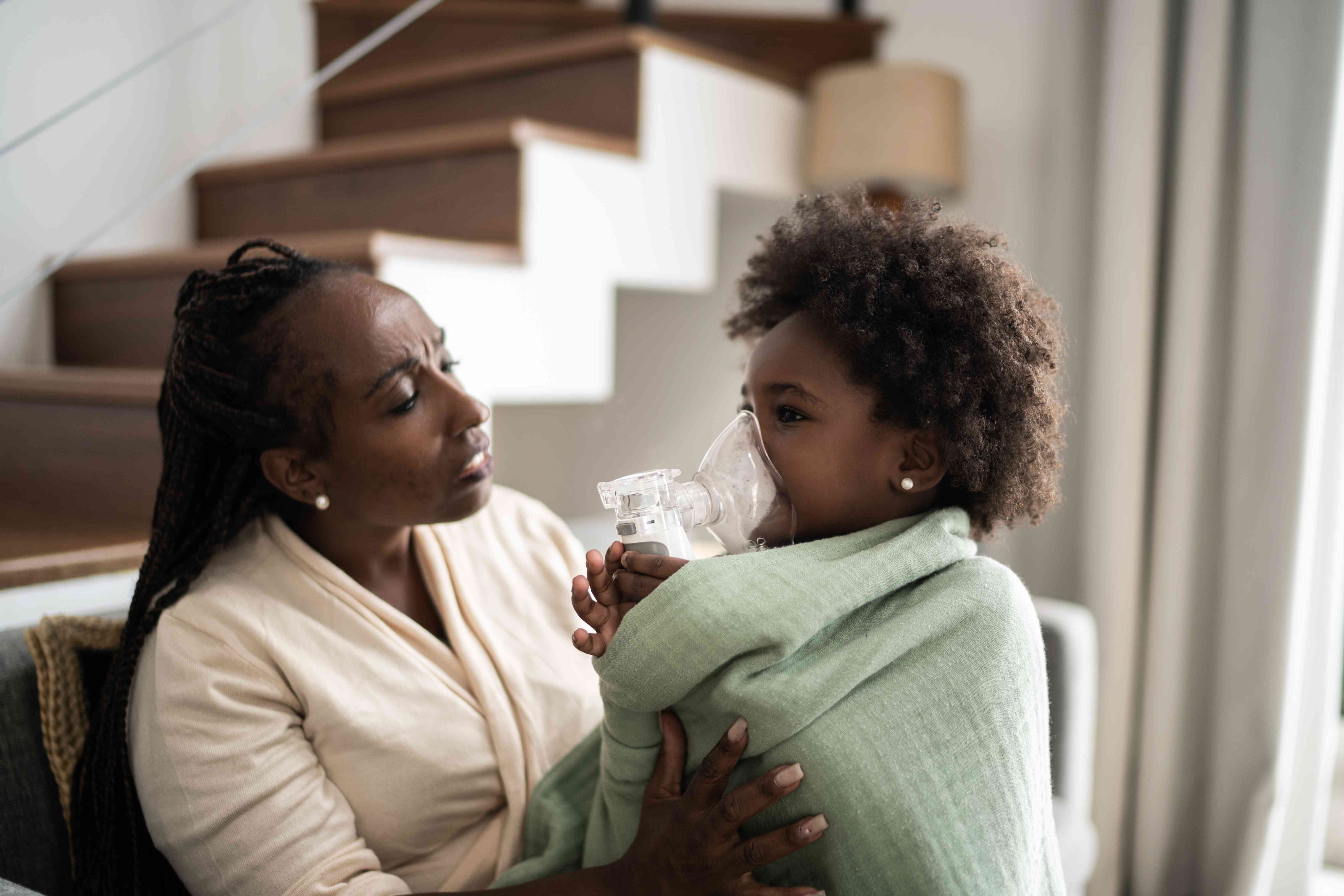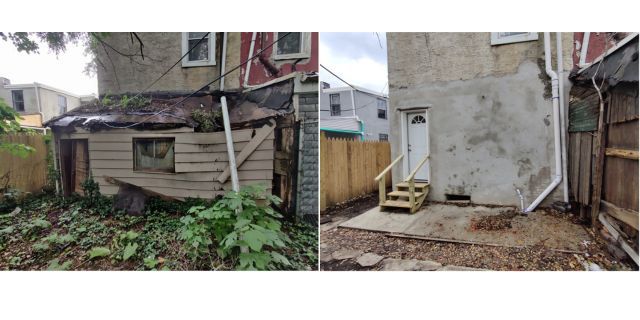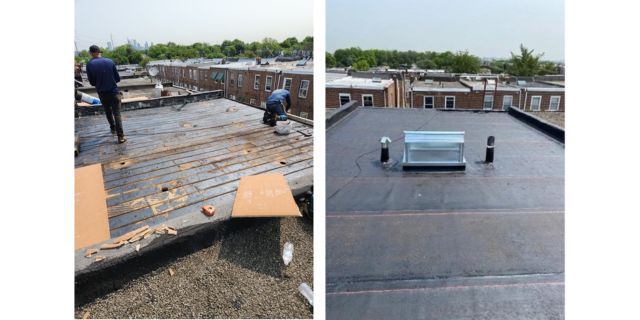Asthma Triggers In Homes Can Send Kids to the ER—This Organization Is Working to Change That

This Philadelphia organization is keeping kids with asthma out of the emergency room by investing in significant home improvement projects

FG Trade / Getty Images
For parents of children with asthma, witnessing an attack of severe symptoms can be a terrifying experience—just ask Djiby Dia.
Dia, a parent living in Philadelphia, has two children with asthma. Both have been rushed to the emergency department three or four times each with wheezing and breathing issues. One trip was particularly hard.
“One night, my wife was with my son when he had a hard time breathing. She called me while I was in the basement to let me know that we had to call the ambulance because she was scared about my son’s health,” Dia told Health. “During the trip, they had to give him medication inside the ambulance before we got to the hospital.”
Dia’s children received treatment at the Children’s Hospital of Philadelphia, where doctors were able to provide medications such as albuterol and oral steroidsto subdue symptoms and help restore their normal breathing.
These types of experiences aren’t uncommon, particularly for families living in certain Philadelphia neighborhoods. It’s estimated that 6.5% of kids in the U.S. live with asthma; in Philadelphia, that number jumps to 21% of children.
And the disease doesn’t impact kids equally. According to 2019 data, 11% of white children in Pennsylvania have been diagnosed with asthma at some point in their lives, as compared to almost 17% of Black and Hispanic children. Black and Hispanic children in Philadelphia are also hospitalized for asthma at rates nearly five times higher than those of white children.
The health divides seen in these Philadelphia neighborhoods happen for largely the same reasons that other health disparities do—socioeconomic, political, environmental, and social factors called social determinants of health leave certain already marginalized groups more likely to develop certain conditions.
But Tyra Bryant-Stephens, MD, chief health equity officer at the Children’s Hospital of Philadelphia, and her team have a solution that’s ripping out the problem at its source, and cutting asthma-related emergency room visits by about 40%.
Study: Gas and Propane Stoves Linked to 50,000 Current Cases of Childhood AsthmaAddressing the Root Cause of Asthma Symptoms
People with asthma have inflamed, and therefore narrower, airways. When they’re exposed to certain triggers, that inflammation can get worse and lead to an asthma attack, Bryant-Stephens told Health.
Triggers can vary from person to person, but common ones often lurk in the home: Pests (such as cockroaches and mice), mold, pets, chemicals or fragrances, and dust all trigger symptoms.
If a child with asthma has a particularly bad inflammatory response to one of these environmental triggers, they may need to be treated for severe symptoms at the hospital.
Rather than simply continuing to manage asthma attacks, Bryant-Stephens wanted to make changes that would keep kids with asthma out of the emergency department in the first place.
In 1997, Bryant-Stephens started the Community Asthma Prevention Program (CAPP) at the Children’s Hospital of Philadelphia, and is still serving as its medical director.
CAPP partners community health workers with parents who are struggling to manage their child’s asthma—Dia’s two children are CAPP patients.
Throughout Philadelphia, these home visitors provide families with education and resources about asthma, and they also check for common asthma triggers.
With CAPP’s success, Bryant-Stephens and her colleagues launched CAPP+ in 2018, an extension of the original program that focuses on more substantial projects to alleviate asthma triggers in a home. CAPP+ renovates homes to help fix the underlying cause of environmental asthma triggers in families’ homes, such as removing carpeting, fixing leaky pipes and roofs, installing ventilation systems, providing extermination services, and more.
“The most common triggers inside the home are cockroaches, dust, tobacco smoke, and mold,” said Bryant-Stephens. “We’re really trying to get to the root cause of these exposures in the home.”
CAPP+ does repairs on about 30 to 50 homes a year, and just this year, completed their 200th project, she said.
Funding comes from philanthropy and the Children’s Hospital of Philadelphia community benefit fund, Bryant-Stephens explained. Each project takes six weeks on average, and CAPP+ budgets about $13,000 to $15,000 for each home.
And the good stretches beyond just each individual family’s home—CAPP+ works with Habitat for Humanity and Rebuilding Together Philadelphia, which are required to give CAPP+ work contracts to minority- or women-owned businesses.

The Children's Hospital of Philadelphia/The Community Asthma Prevention Program Plus
How CAPP and CAPP+ Work
Once a child is rushed to the emergency department with severe asthma symptoms, the Children’s Hospital of Philadelphia team looks for ways to set parents up with assistance in managing their child’s asthma.
This is where the community health workers like Robin Williams step in.
“We make contact with the family just to see how we can support them to try to prevent them from having ER visits in the future,” Williams, a home visitor for CAPP, told Health.
Families can be referred for CAPP, and are eligible for home visiting and education services as long as they live in one of three Philadelphia counties, their child is on a preventative asthma medication, or they’ve had two emergency department visits or one inpatient admission due to asthma.
Once in the CAPP program, families are connected with Williams or one of her colleagues. Community health workers will look at the child’s background, and go out to the home for an educational visit. These visits provide opportunities for the home visitors to look for potential triggers in the home, and educate parents about how to help their children avoid them, Williams explained.
“If it’s wall-to-wall carpet in the room, we let them know that that most likely is a potential trigger,” she said. “If they have any issues with rodents or pests, if they have any water damage, pet dander, if they have any animals—we just talk about different ways to work with the family just to see how they can eliminate the triggers in the home.”
From there, families are given “mitigation supplies” that can hopefully help lessen the child’s asthma symptoms. This might include dusting cloths, a vacuum, mouse traps, a mattress cover, non-irritating cleaning products, and more, Williams explained.
If home visitors notice that there are bigger issues in the home that could be triggering asthma, they can encourage families to apply for CAPP+. These home repair services are available to families living in West Philadelphia, and those whose child has had an asthma episode—meaning they needed to use an oral steroid to treat symptoms—at least twice within the last year, Bryant-Stephens explained.
CAPP+ team members—usually a representative from Rebuilding Together Philadelphia—will accompany the home visitor to look for any triggers that need a bigger fix.
“We’ll go through the house,” Williams said. “We start from the basement and work our way up to the top floor.”
The team will look for any leaks or water damage near washer and dryer hookups, under sinks, and in the bathroom. They’ll also check the child’s bedroom for ceiling fans (which can circulate dust) or carpet (which can cling to dust). They’ll flag mold in the house that needs to be removed, and find any holes that need to be patched up, she said. With the family’s permission, they’ll make as many improvements as they can within budget.
“If you don’t have a good filtering vacuum to pull that dust out, it’s just sitting,” Williams said. ”So a lot of the families do like to have their carpet removed if possible.”
Another “big ticket” fix is water damage—mold is one of the worst asthma triggers, and removing it can have the biggest impact, she added.
This was Dia’s experience during his family’s CAPP+ renovation—in addition to setting mouse traps, workers made improvements to the roof and piping to eliminate water and mold in the basement, he said.
It was recommended that his house be outfitted with better ventilation in their kitchen and bathrooms, but it fell outside of the budget. Even though that work wasn’t completed by CAPP+, Dia said it’s helpful to know, so he can eventually complete the project himself.
“The kids, it was very hard for them,” he said. “There were a lot of things in the house that were giving them…asthma [symptoms].”
Dia said he used to worry about his kids’ health, and would frequently hear them coughing. Post-repairs, he said he feels like the air in their home is better, and the project has led to his children “[having] better health.” Neither of his kids has gone to the emergency department for asthma since their family started working with CAPP and CAPP+.

The Children's Hospital of Philadelphia/ The Community Asthma Prevention Program Plus
Just One Piece of a Larger Puzzle
Because we spend upwards of 90% of our time indoors, addressing asthma disparities through housing can have huge effects on health. CAPP and CAPP+ are hoping to make that impact even greater each year as the program continues, Bryant-Stephens said.
The goal is for Bryant-Stephens and her staff to slowly but surely increase funding and expand the programs’ reach throughout Philadelphia. They’re also hoping the model spreads to other cities around the country, so children outside of West Philadelphia can see the same type of improvements in asthma symptoms.
But Bryant-Stephens has a “pie in the sky” goal of making sure every child has access to “housing that’s safe and healthy,” she said.
“We as a city need to really think about that, how we can [use] best practices, how we allocate or reallocate funding so that the focus is on making sure that children…are in an environment that promotes their health,” she explained.
That would mean housing policy collaboration between city, health, and community organizations, she added, and more intentional work on expanding access to healthy housing.
These are lofty goals, but they’re critical—asthma disparities aren’t unique to Philadelphia, and across the U.S., childhood asthma is a substantial issue, especially for kids of color and those with a lower socioeconomic status.
Poor housing conditions that can trigger asthma—including pests, old carpet, and water damage—are largely a product of past and current discriminatory housing practices endured by families of color. Poverty is a driver of these asthma disparities, Bryant-Stephens explained.
Also within the home, gas stoves—which emit nitrogen dioxide, an irritating gas for people with asthma—are an issue. Research published earlier this month found people living in smaller homes, and Black, Hispanic, and Indigenous/Alaskan Native families are more likely to be exposed to this nitrogen dioxide.
Even beyond the scope of what programs like CAPP or CAPP+ can do, there are other environmental asthma triggers kids face that are harder to control.
For one, outdoor air pollution can also cause inflammation of people’s airways and cause asthma symptoms. Again, certain children are more so affected.
People with a lower socioeconomic status and Black, Hispanic, Asian, and Latino Americans are more likely to be exposed to air pollution. One study suggested that exposure to air pollution could lead to the development of asthma in children and that this risk is especially high among minoritized families.
In addition to air pollution, kids might also run into certain asthma triggers while they’re at school, even if their home has clean air.
With childhood asthma disparities being such a layered issue, the CAPP and CAPP+ teams can’t remove every trigger for every child. But what they are doing makes a world of difference.
If a child with asthma “sleeps on top of carpet every day, and then this carpet is removed, then that’s like a whole new life,” Williams said. “It does help with a lot of families. They really do see a difference.”
More Than 130 Million Americans Are Breathing Unhealthy Air, New Report ShowsThis story originally appeared on: Health News - Author:Julia Landwehr

















